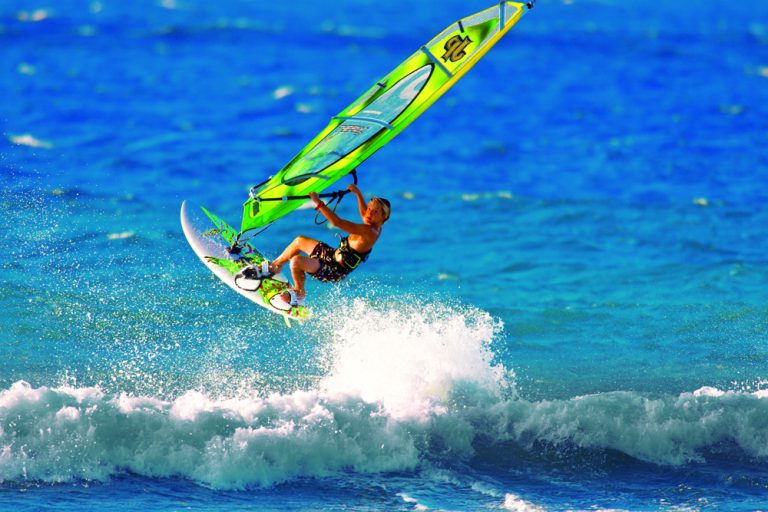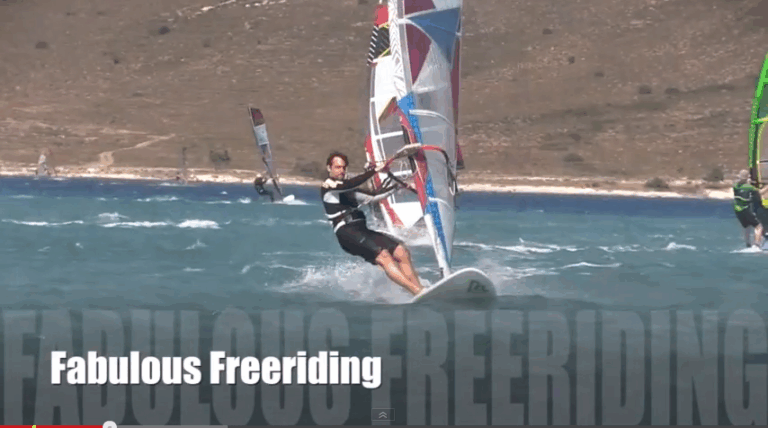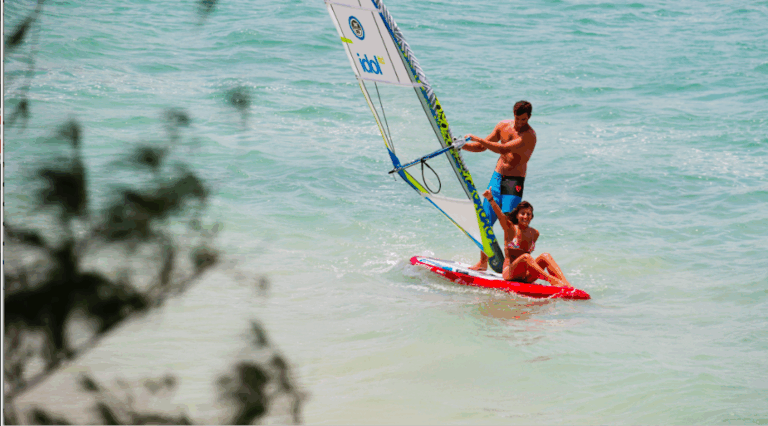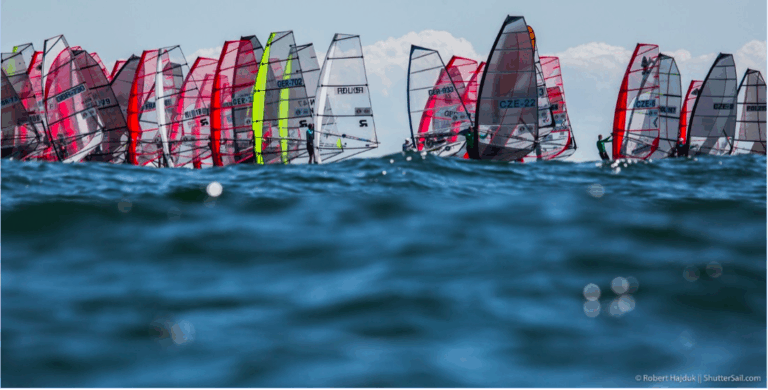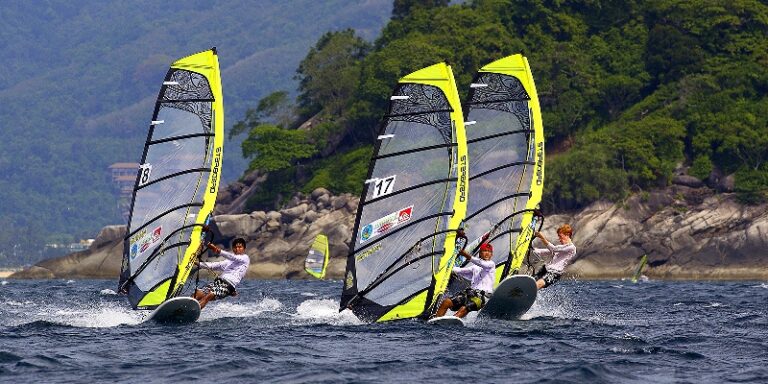If you’re new to windsurfing and wanting to buy your first board it’s worth thinking long and hard about your purchase. There are a whole host of boards you could purchase, but it’s all about finding the right one for you, your level and the conditions.
Simon Bornhoft joins Boards to talk through your options and help clarify what could be the best first board for you…
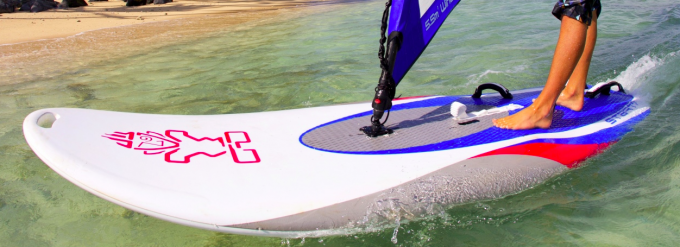
“You’ve probably seen the comedy sketch where a bewildered customer goes into an off-licence and spends a life-wasting period of time scanning the shelves. After a long deliberation, he turns to the retailer, “What’s best then, red or white?” It’s not the funniest, but it could have been shot in a windsurfing shop, where there’s a vast array of boards on offer, and you might well end up thinking “Which is best then, the red one or the blue one?” At first, board selection can seem perplexing, but if you make a considered choice you can find the right ride for you.
First piece of advice – don’t just buy that £100 board you see on eBay as it’s likely to be the windsurfing equivalent of a wooden tennis racquet! Have lessons first, hire for a while and then you’ll have a better concept of board sizes, names and what you want from the sport. When you’re ready to buy, select a board that offers long-term potential for your needs and aspirations, but isn’t too challenging to sail. In basic terms, boards are of similar length, but they vary more in width and volume. Wider, higher volume boards (140-200L) are more stable and easier to sail and suit beginners, improver-intermediates, lighter winds and inland waters. The small, fast boards (75-135L) you see people using are for more experienced sailors in stronger winds and rougher coastal conditions. They require more technique to sail, so are likely to be your choice of second board when the time comes. Right now you need something easy that you can evolve with, and then keep to partner any smaller boards you might progress on to in the future.
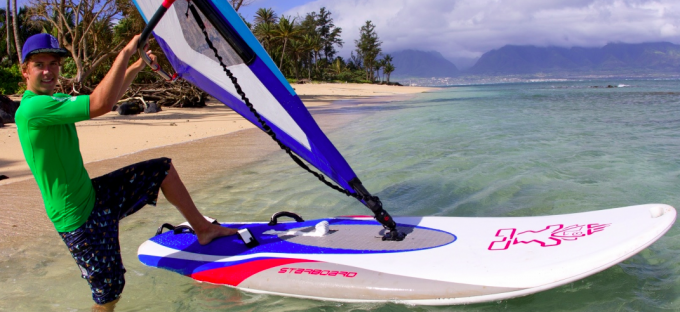
Most people relate to one of the three following categories, so read through these to help narrow your first board choice. (If you can’t afford a new board then look at second-hand options that fit into the criteria we’ve outlined here.)
Beginner
If you plan to take the sport quite gradually, sail occasionally, or it’s a family activity with a broad range of levels, statures and ages using the board, I strongly suggest buying a high volume ‘beginner board’. The new ‘widestyle’ boards are so much easier and lighter than boards from a few years ago. They’re at least 75-90cm wide, which reduces your chances of falling off and increases your control and ease of getting ‘planing’. They’re undoubtedly the easiest boards to sail on the market! The ones we’re suggesting here aren’t the massive white 200-220L school ‘platforms’ you might have had your lessons on: these are sporty, fun and perfect for embracing the early stages of the sport.
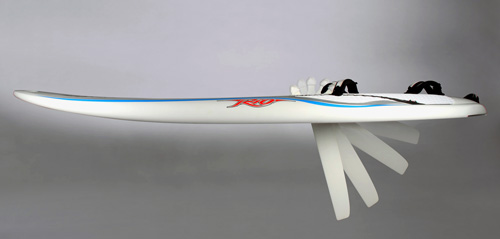
Daggerboard vs Centre-Fin
Most beginner boards have retractable daggerboards which, when down, give greater lateral resistance, stability, and aid staying upwind in light wind, ‘non-planing’ situations. The daggerboard is retracted into the hull when the board is sailed over the water at ‘planing’ speeds. The alternative is a fixed centre-fin that bolts onto the underside of the board and can be removed with a screwdriver for stronger winds. Given a choice between the two, I’d recommend a retractable daggerboard – especially if you sail inland.
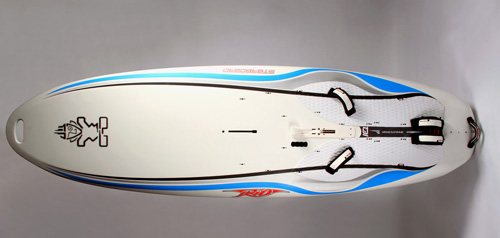
Beginner Board Q&A
Volume? 165-190L
Width? 75cm+
Daggerboard / centre-fin? Yes
Foostraps? Initially you don’t need to fit them, but once you start to use a harness they help stabilise you on the board.
Anything else? Soft deck options are great for scrambling onto painlessly without ruining the knees of your wetsuit!
What to avoid? If anyone tries to sell you a second-hand ‘beginner board’ that’s less than 70cm wide, run away!
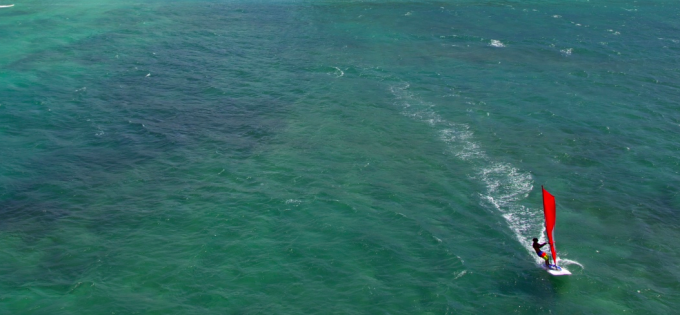
Want a board that you can progress with instead? Read on for more board options…

